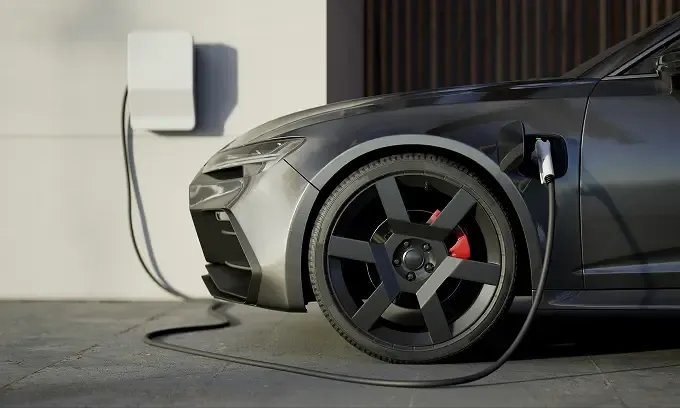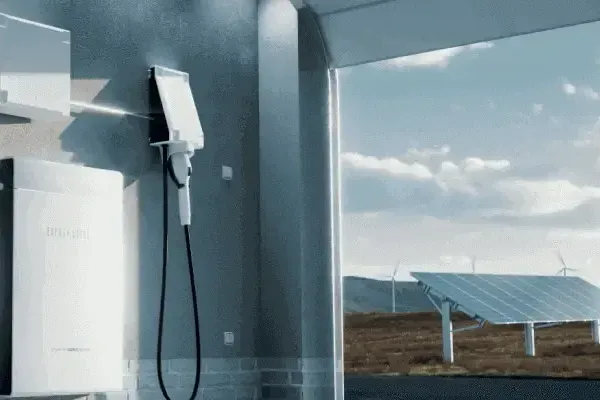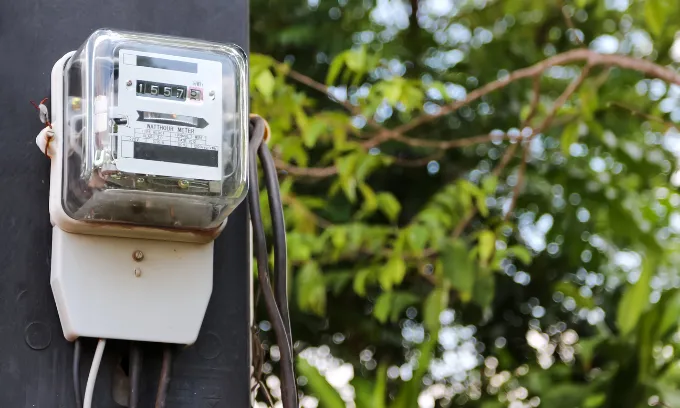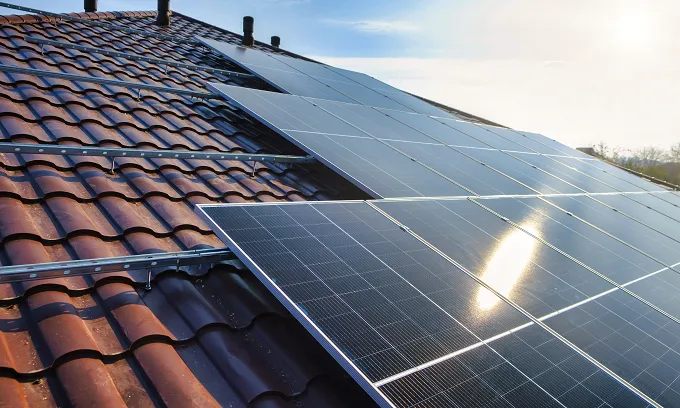What is an EV electricity plan?
An EV electricity plan is a tariff designed with the charging habits of electric vehicle owners in mind. These kinds of plans are still relatively new, so only a few retailers currently provide them. However, the list is growing thanks to Australia pursuing the National Electric Vehicle Strategy, which is a Government initiative designed to encourage EV ownership.
Providers that offer EV electricity plans
Red Energy
Red Energy is offering electric vehicle customers in NSW, VIC, QLD, SA and ACT the ‘Red EV Saver’ plan, which comes with free electricity usage charges between 12pm and 2pm every Saturday and Sunday. EV owners will need to have a smart or interval meter and sign up online to be eligible.
There is no contract term or exit fees and Red Energy has a ‘renewable matching promise’ where for every unit of electricity you buy, Snowy Hydro Limited will match it by generating one unit of electricity from a renewable source.
Momentum Energy EV Does It Plan
Available only in Victoria, Momentum Energy’s EV Does It plan is offered to current electric vehicle owners. It includes lower off-peak rates for customers on a time of use tariff.
EV Does It is a no-contract plan that includes additional benefits, such as a solar feed-in tariff. You will need a smart meter to qualify, and all payments are to be made by direct debit only.
Best EV electricity plans
EV electricity plans in VIC
Provider | Plan name | Est. annual cost (inc. all discounts) | Est. annual cost (ex. conditional discounts) | Reference price comparison (Energy Fact Sheet) |
|---|---|---|---|---|
Momentum Energy | EV Does It | $1,518 | $1,518 | 2% less |
EV electricity plans explained
Two types of electricity plans are offered — ‘market offers’ and ‘standing offers’. Every EV electricity plan will be a market offer, but no EV electricity plan will be a standing offer.
Every plan charges you for your running electricity use measured in kilowatt hours (kWh).
Market and standing offers show an estimated annual price based on a general annual usage estimate. This figure will differ between states and within states.
Market offers
Market offers are freely set by providers, with attractive rates (prices) and enticing discounts (e.g. EV-related discounts and/or charging periods).
- Market offers have a fixed contract length before they expire.
- Most market offers are variable rate, allowing providers to increase their rates before they expire.
- A fixed rate plan maintains rates during the length of its contract, but they aren't common.
Standing offers
Standing offers strictly follow the regulated reference price in every state. Standing offers protect Aussies who don’t compare electricity plans from overpaying for electricity. They’re also a reference for comparing other market offers against. Price differences are expressed as a percentage (%) above or below the reference price.
- If you haven’t switched electricity plans for a long time, the EV electricity plan you were on (if any) has likely expired. Your provider will then move you to its standing offer.
- If you’re on a standing offer, you’re likely paying the most a retailer is willing to charge you.
- Market offers can be priced more than standing offers, but this is uncommon.
- There is no contract length, so you can stay on them as long as you desire.
- Standing offers don’t offer any discounts.
EV electricity plan pricing
Virtually all electricity plans come with two charges — ‘supply charges’ and ‘usage charges’, which are clearly outlined on your electricity bill.
- Supply charges: Supply charges are a fixed cost (in c/day) you pay to remain connected to the grid.
- Usage charges: A variable cost for every kWh of electricity you use.
Tariffs are pricing structures used to set a plan’s usage charges (in c/kWh).
- Single rate tariff: Electricity rates stay consistent throughout the day.
- Time of use (ToU) tariff: Different rates during peak, off-peak, and shoulder periods. To be eligible for one, you must have a smart meter installed in your home.
- Controlled load (CL) tariff: Energy-intensive appliances (e.g. pool pumps, or in this case an EV charger) are metered separately at a cheaper rate. To be eligible for a CL tariff, you’ll need to have a separate CL meter installed or a smart meter. If you have neither, you would have to ask your distributor (the grid) for one. Keep in mind that you'll have to limit your appliance's hours of operation.
- Demand tariff: Supply and usage charges and an extra demand charge.
- Block rate tariff: One rate for the first electricity ‘block’ and another for the remainder.
Market offers usually come with discounts for a plan’s contract length or benefit period:
- Conditional discounts: Discounts if specific conditions are satisfied (e.g. pay on time discounts).
- Dual fuel discount: A discount when you bundle electricity and gas plans from one provider. This is a type of conditional discount. Note that a dual fuel discount doesn’t guarantee the cheapest price for both. You could save more by two separate plans for electricity and gas from two different providers. First calculate if having two separate providers saves you more than a dual fuel discount.
- Guaranteed discounts: A discount that applies to all customers — this discount is usually shown as a percentage off a plan’s advertised price and is typically active for one year.
- Reward programs: Some plans offer free access to reward programs, giving you points for every dollar spent on electricity bills. These points can be exchanged for rewards (e.g. movie tickets) through an online portal.
You can also expect to find the following incentives on EV electricity plans:
- Bill credits for electric vehicle owners.
- Designated charging periods with lower usage rates.
These incentives help EV owners offset additional electricity costs from charging their vehicle at home.
All of these features can be found on a plan’s energy fact sheet, which is called Basic Product Information Sheets (BPIDs) in NSW, QLD and SA and a Victorian Energy Fact Sheet (VEF) in VIC.
On the results page of Canstar’s comparison platform, you can access a plan’s BPID by clicking on the ‘Basic Plan Information’ prompt.
Are EV electricity plans worth it?
Switching to a dedicated EV electricity plan will have perks for EV owners. Whether it be through the bill credits awarded or the cheaper charging periods set, there is the potential for EV owners to save on energy costs if they take advantage of these kinds of plans.
The biggest savings will come to those who take all the necessary steps to meet the requirements of the plan (e.g. shifting their charging schedule to align with the cheapest tariff times).
It’s also important to note that, though you may be charged cheaper rates during ‘charging times’, these plans may offer rates that are slightly higher than those on normal market contracts outside of these times. This means you could be charged more for your day-to-day energy usage.
Which EV energy plan is right for me?
Choosing the right EV energy plan boils down to your personal EV habits. Here are some EV-specific considerations to keep in mind when shopping around for a plan:
- Which state you live in: Different states will have different plans readily available.
- When you intend to charge your EV: Different plans have different charging periods with lower (or free) usage rates — choose the plan that aligns with your charging habits (e.g. daytime vs nighttime charging).
- If you have a solar system with or without a solar battery: A rooftop solar system can help you charge your EV with solar-generated energy, reducing your energy bill and grid-reliance. Some plans may even offer a solar feed-in tariff (FiT).
FAQs about EV electricity
The cost of charging an electric vehicle will fluctuate depending on personal circumstances, however you can generally expect this to cost less than what it would to refill a petrol car. This is because you’ll be charged per kilowatt hour (kWh) of electricity as opposed to per litre of fuel. According to some of our previous estimates, in some cases, EV owners may only pay a quarter to a third of their original petrol costs to charge their EV.
No, it is not mandatory to be on an EV electricity plan whilst owning an EV. These plans are offered as an alternative for EV customers to help them offset the cost of charging their EV at home.
Almost all EV electricity plans will require customers to have a smart meter installed at their property. This is because many of these plans operate on a time of use tariff, with different times charging different rates. A traditional meter is unable to differentiate these time changes in the billing process.
EV electricity plans can be cheaper than some normal market electricity offers. However, whether these plans will actually save EV owners on their bills will depend on how they use their energy. If the EV owner isn’t shifting their usage to make the charging times work in their favour, or meeting the requirements of the bill credits or discounts, then they may find their EV plan to be on par with – or potentially more expensive than – an ordinary market offer.
No. Currently, Australians have just only a few electric car plans to choose from that provide an added benefit for EV drivers. Check the rates attached to these plans before you sign up.









